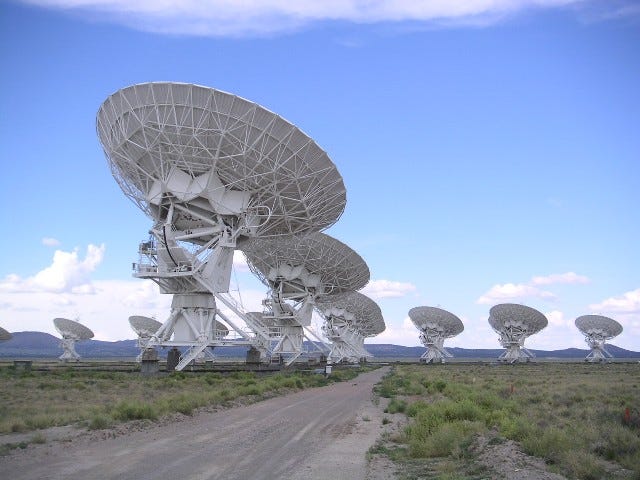Finding extraterrestrial life is not just a question of WHEN we will find the first life off the Earth, but HOW we will find it. We already know of more than 4,000 planets orbiting other stars, and that number will greatly increase in the coming years and decades as revolutionary instruments set their sights on alien worlds. A new study suggests that up to one-quarter of all exoplanets slightly larger than Earth could house liquid water on their surface. Many exoplanets are now known to have atmospheres, and temperatures conducive to life, although finding all these desired qualities in the same world remains rare. There are three likely possibilities for the first contact to be established and each scenario comes with its own opportunities and pitfalls. [Read: We won’t reach other solar systems for a while — robots could visit them first]
“To serve man? They sound friendly!”
Most visions of first contact, from Cold War-era science fiction to Star Trek pictures aliens (usually onboard flying saucers), landing on Earth. Without a doubt, aliens landing on Main Street, asking for the planet’s leader would leave little room for doubt as to their existence. This scenario is also the least likely to happen — space is big, and traveling through space is limited to the speed of light (although warping space may actually be possible). So in-person (in-alien?) meetings are not likely to be common.
It’s like interstellar zoom
The greatest effort so far in the search for extraterrestrial intelligence (SETI) is through radio telescopes. Any civilization as advanced as we are will almost certainly be broadcasting radio waves to space. While some of these may be intentionally sent to attract other civilizations (as seen in Contact), there also exists the possibility that extraterrestrial radio or television (or, perhaps, video meetings) are leaking to space, waiting to be picked up by detectors here on Earth. Such a finding would be fairly good proof that other intelligent species arose on another world. But, such a technological signal could only come from a species that developed radio technology. Simple lifeforms are not likely to broadcast radio waves. But, that doesn’t mean they can’t change their planet.
This one’s a gas!
The most likely scenario for humans to find life elsewhere in the Universe to find telltale signs of life in the atmospheres of worlds orbiting distant stars. Life existed for hundreds of millions of years on Earth before humans evolved and started building radio telescopes. If astronomers are able to show the chemical makeup of a planetary atmosphere is unlikely from simple chemical reactions, then life may be found on that world. This is the only scenario that allows us to find life on worlds without a technological civilization. In the video above, you can look at how the James Webb Space Telescope will explore atmospheres of distant planets. (Video credit: NASA) For now, such studies are at the cutting edge of exoplanet research. A new generation of telescopes, including the James Webb Space Telescope (JWST), will begin operations in the next few years, examining these distant worlds. A second chemical process that could betray the presence of life would be the discovery of alien genetic code in asteroid, comet, or on a planet or moon in our solar system. This “ETDNA” would provide good evidence for life on other worlds (and perhaps a glimpse into their basic life processes). But, given the fragile nature of genetic code on Earth and the harsh conditions of space, any such fragments of alien genetic code is likely to be highly inconclusive. The most likely way we will find life — by studying the atmospheres of distant worlds — is also the least conclusive. The most certain way to know we have of knowing aliens are out there is to watch them land in front of a crowd, but that’s the least likely scenario for first contact. This article was originally published on The Cosmic Companion by James Maynard, founder and publisher of The Cosmic Companion. He is a New England native turned desert rat in Tucson, where he lives with his lovely wife, Nicole, and Max the Cat. You can read this original piece here. Astronomy News with The Cosmic Companion is also available as a weekly podcast, carried on all major podcast providers. Tune in every Tuesday for updates on the latest astronomy news, and interviews with astronomers and other researchers working to uncover the nature of the Universe.



